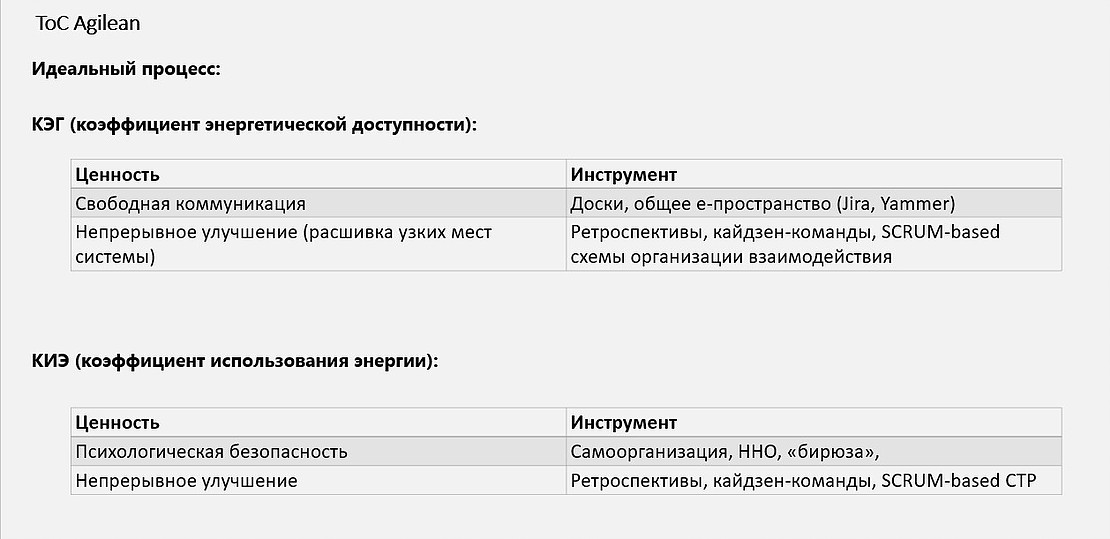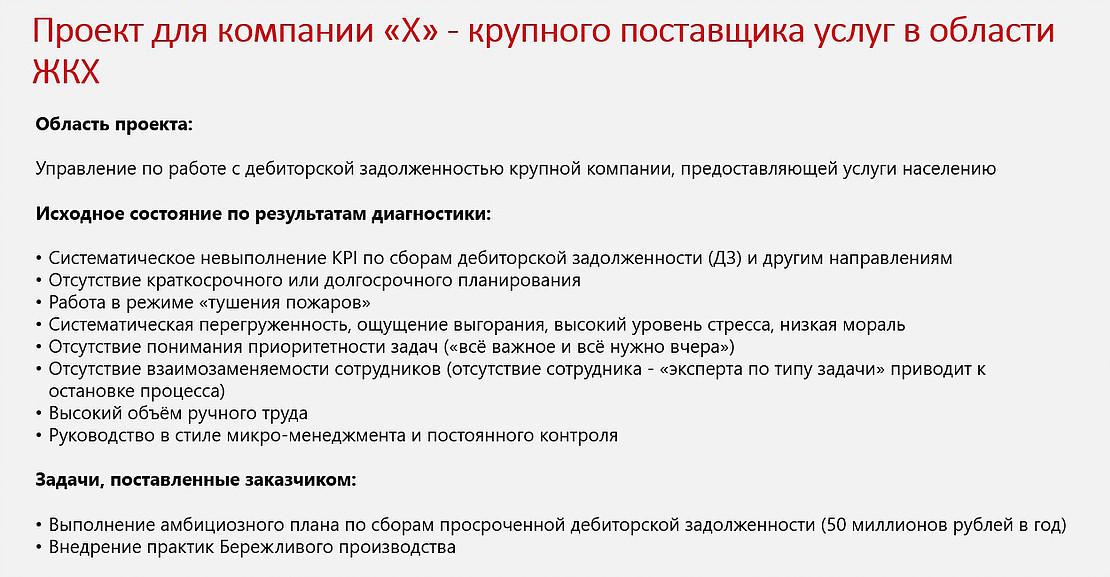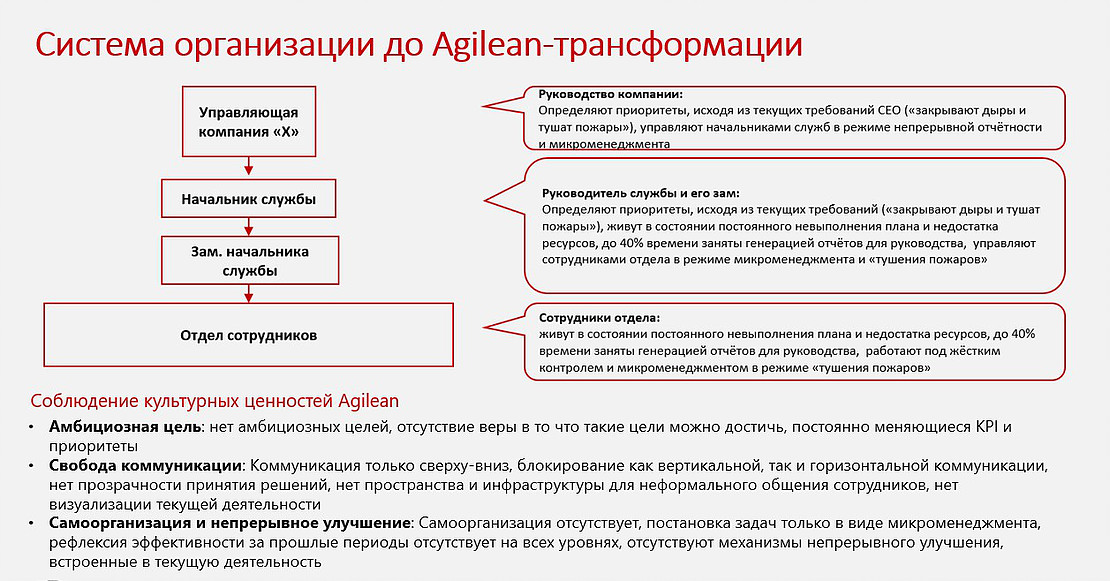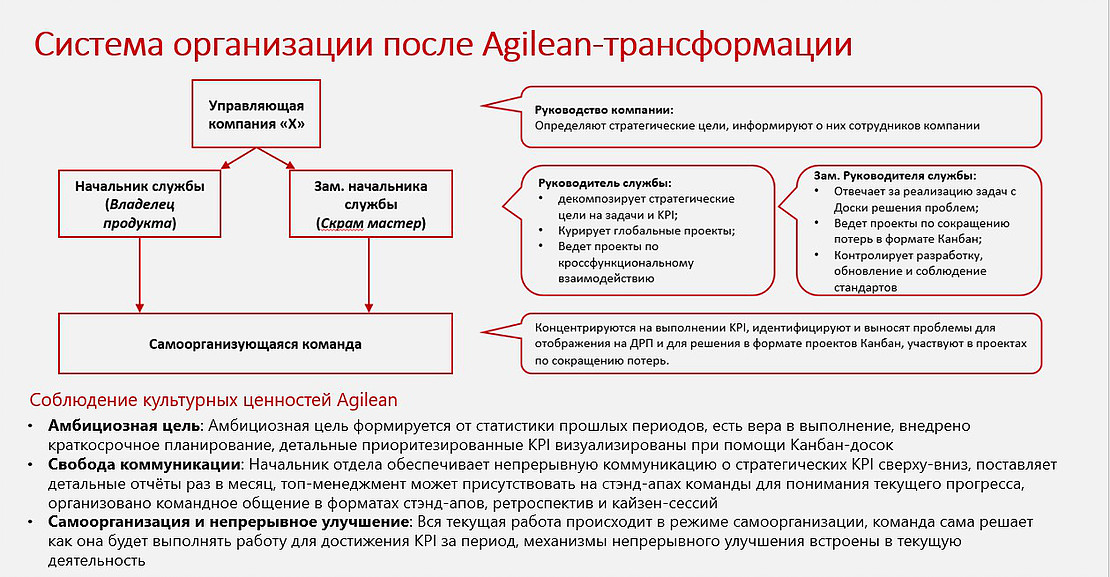Agilean - the killer of Lean and Agile

Value Based Hybrid Management Methodology
In this article, we will tell you about Agilean (“Edgeline”) as a method of creating hybrid tools based on Lean and Agile, and more broadly about Agilean as a philosophy of business management from a bridgehead of values.
Let's talk a little about the nuances of human physiology and psychology, on the basis of which the logic of the Agilean method was formulated, and, in conclusion, we will analyze the practical example and principles of applying this hybrid method to solve business problems.
Happiness at work or understanding the dopamine basis of employee motivation
Considering the biological systems and mechanisms created by Nature (you can substitute here “God”, “Higher powers” or any other word that you prefer), one cannot help but admire how complex and at the same time harmonious and reliable engineering solutions are, applied in the construction of the human body. Many of them are millions of years old, but they remain unchanged and continue to successfully perform their functions, despite the radically changed conditions of use.
The eternal relevance and effectiveness of these decisions is ensured by the fact that they are built not on contextual conditions, but on basic principles. Let us examine one of them, namely, the mechanism of "continuous improvement" and the desire for continuous development. A kind of physiological and psychological kaizen person.
When creating an effective organism, nature was faced with the task of how to make sure that each individual in a population continuously strives not only to multiply and strengthen its security, but also to continuously develop and improve all aspects of the population’s existence.
As with other basic instincts, Nature solved this problem with the help of the human reptilian brain + hormonal system.
With "socially-wrong" human behavior, the reptilian brain instructs the hormonal system to use the "stick" in the form of the release of the hormone of depression and self-destruction - cortisol, and the "carrot" - in the form of the secretion of the hormone of motivation and the anticipation of happiness - dopamine with the "socially correct" behavior .
The decision to understand which social behavior of a person is correct (aimed at developing a population) and which is wrong (aimed at anything other than developing a population) was also simple, reliable and elegant, like everything that Nature does.
Our dull “reptilian” brain simply reads what people around us think about our behavior, using our thoughts on this subject. If we consider the reaction of society to our actions as approving, then the ancient brain opens dopamine faucets, filling us with joy, anticipation of the reward, as well as energy and the tireless will to overcome obstacles on the way to the goal.
Remember the moment when you started an important project, the results, which, as you know, could greatly advance you and strengthen your career position, and with each successful step your brain flooded you with joyful anticipation. You only wanted to think about the project and its goals, you could work tirelessly for 20 hours a day, and woke up filled with boiling positive energy, despite a lack of sleep and an unhealthy diet.
But you probably will not be difficult to recall those moments when the success of the project was at stake - stress, anxiety and fear, if the risks of failure were not fatal. And with a complete failure, when you realized that the success of the project was practically unattainable, you felt depressed, apathy, the inability to force yourself to do at least something and the persistent desire to “drop everything and leave for Gagra”.
Cortisol and dopamine are the tricks of the good old mother of Nature, who, without a shadow of a doubt, is ready to subject us to any suffering if we do not benefit the population, but will not refuse a reward if we are useful.
That is why a person who finds himself inactive inevitably tends to artificially generate dopamine in the form of such quick pleasures as drugs, alcohol, gluttony, etc.
“This is all entertaining information,” you say. “But where does Lean, Agile and business management have to do with it?”
OK. Let's look at where business management is and what practical sense for us, business people, has all this information.
Theory of Constraints for gears and people
In the distant 80s Eliyahu Goldrat developed the “Theory of Constraints”. As Wikipedia says, “The main feature of its methodology is that by making efforts to manage a very small number of aspects of the system, an effect is achieved that far exceeds the result of simultaneously affecting all or most of the problem areas of the system at once or in turn.
The approach of the theory of constraints is based on identifying and managing this constraint in order to increase the efficiency of achieving the set goal (for businesses, accelerating and increasing profit generation). Where effectiveness is the speed of achieving the goal with the lowest possible cost and without cutting the goal in content. ”
Despite the fact that the Theory of Constraints gradually evolved as a methodology for solving any systemic problems at low cost, it received its main application in the field of optimization of production processes. In fact, all its actions are aimed at increasing the two main KPIs of equipment operation - KIO (equipment utilization rate) and CTG (technical readiness coefficient).
If you use its principles very primitively, then to create the most efficient production chain you must eliminate bottlenecks (“bottlenecks”) of the process, configure the operation of all pieces of equipment in one rhythm and maintain the technical condition of each piece of equipment in the optimal state for the mechanism - work on full design capacity with a minimum of failures.
In accordance with the principles of the Agilean hybrid approach, we took this methodology and applied it to people, however, given that people are not mechanisms, and ensuring maximum KIO (equipment utilization rate) and CTG (technical readiness coefficient) for people is achieved by other methods.
After some simple reasoning, we come to the conclusion that in order to build ideal organizational processes (as opposed to production ones) we must provide 1) the maximum breakdown of the communication process (because, unlike mechanisms, people in the organizational process set each other in motion by means of communication, rather than pulleys and gears), 2) a mechanism of constant motivation that will force each unit of the human chain to work at its maximum design capacity with minimal depreciation.
And if the value of free communication as ensuring the speed of human chains (organizations) is quite well-known and obvious to an enlightened circle of business figures, then the value of self-organization as the only ideal tool for involving and motivating employees is not obvious to everyone.
Moreover (the author will allow himself a little lyrical digression on this sensitive issue), HR services of almost all large modern Russian companies persistently fill their corporate programs to increase employee involvement with such things as “improving the living conditions of employees”, “tickets for the best employees ”, etc. etc., wondering every time why the results of such motivation give only a short-term effect.
If they understood the principles of dopamine motivation, it would quickly become obvious to them that their involvement programs were like ticking a dunght with drugs - the effect is short-lived and each time more and more subtle, and the withdrawal syndrome is destructive.
What are the principles of dopamine motivation that you need to know to make the involvement of your employees as high as possible, cost-free for the company, permanent and self-renewing.
These principles are simple:
- “ Ambitious but achievable goals ” - the “reptilian brain” will give the employee a lot of dopamine energy-motivation, only if he himself believes that the goal is important. But also the goal must be achievable, because the fear of the “cortisol” whip will not allow him to act in the event of a high probability of failure.
- “ Self-organization ” - “reptilian brain” will open dopamine faucets only if the task set out emphasizes the high value of a person in the eyes of the population - compare the task setting by the head: “Edward, the company decided to launch a project important for the company, and we believe that only you can bring it to success, think and suggest the best option for its implementation ”and“ Edward, the project is very important, so I wrote a detailed plan here, where I drew everything to the smallest detail, follow it scrupulously and report on the progress every day, morning and evening. "
Obviously, in the first case, the reptilian brain considers the person’s high importance for the population and floods it with dopamine motivation, and in the second, it will accurately understand that the leader is important for the population, and Eduard is just a dumb tool, capable of only following someone’s instructions. Actually, instead of energy, in the second case, Edward will receive a cortisol club, from which any thought of completing such a task will cause him to give up, persistent yawn and the desire to fulfill it as formally as possible, and it is better to avoid him altogether.
Knowing these principles of the psycho-physiological mechanism of human motivation and transforming them into a specific set of cultural values, we can build the ideal organizational format for any business activity by precisely selecting, adapting and hybridizing tools from any business methodology.
That is, applying and hybridizing Goldratt’s Theory of Constraints to human interaction, we can derive the following coefficients - KIE (energy utilization factor) and KEG (energy readiness coefficient). Also, taking these principles into account, it is easy to formulate cultural values that create the conditions for increasing these coefficients and give examples of tools from different business methodologies that we can use for this.

Agilean in Practice - X Business Case
Now that the basic principles of Agilean philosophy have been set forth, we will give an example of their practical application, so that it is clear how the method of hybrid development of tools based on this philosophy can bring real value to the business.






Business Transformation Results:
- The financial indicators set by the client as target for the entire implementation period (8 months) were achieved in the first month of implementation.
- All operational KPIs delivered for the reporting period completed and exceeded
- The project generated solutions for operational improvements several tens of times higher than the original financial targets and similar indicators for several similar projects being implemented on other business units using classical Lean methodologies
- Increased team morale and involvement
- Successful cultural transformation recorded as part of a pilot project
“And one ring to rule all ...”
Using the example of this business case, the advantages of the Agilean methodology over classical methodologies and business optimization philosophies such as Lean, Agile, ToC and all similar ones existing today are demonstrated. They are as follows:
- There is no need to “implement methodology and philosophy,” you do not need to memorize the nuances and subtleties of applying methodologies that were developed in a different context, possibly different from yours
- It’s easy to diagnose problems and suggest improvements based only on a diagnosis of the state of core values
- You can create new, modify and hybridize existing tools, starting from a specific case, specific problems and context based on an understanding of values and a common business logic
- Fast implementation, quick and tangible improvements
In fact, based on an understanding of the psychophysiological processes of human motivation, the Agilean method is a step to the next step in the development and understanding of methodologies to improve business performance. It presents a set of principles that combines all existing methodologies, can combine and use any tools to increase efficiency, and reveals simple principles for choosing or creating tools for a specific problem.
All Articles